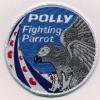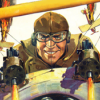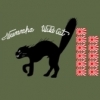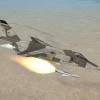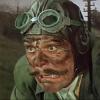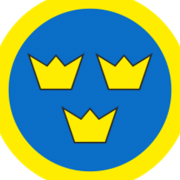Leaderboard
Popular Content
Showing most liked content on 01/10/2018 in all areas
-
13 points
-
9 points
-
2 pointsyes but its like " we are selling you this brand new Bercedes-Menz for badylioon dollars....but you have to put tires ..and seats...and fuel tank on your own - But ! we will provide link for manual.....its for download on some forum...
-
This post cannot be displayed because it is in a password protected forum. Enter Password
-
2 points
-
1 pointToday we are taking a trip back to 2004, a time when as you can see from the photo above featured PC CDROMs! Before Internet speeds for most were high enough to consider sending entire game files they had to distribute games to people using good old fashioned Compact Disks. The shiny CD came complete with its own (Jewel) case with cover and even a printed manual. As you can see a time when even Thirdwire had to distribute games and make them look like games used to - the manual even tells me to go to http://www.softwarehelpdesk.co.uk/ for technical support…………..ha looks like that domain is up for sale! Looking at the back we can see it even ran on Windows ME with 256MB of RAM! - Yes, I had to look back to remember what Win ME was – the very last of the Win 9x line before Microsoft thankfully ditched that and we got Win 2000 then Win XP. Of course, in 2004 or nearly all of that decade Win XP was the only game in town for home users and it was great for its time. For anybody who had bought Strike Fighters: Project 1, a Vietnam game was a logical and most welcome step forward….a game that recreates the intense air combat experience in the skies of North Vietnam at the height of the air campaign……………..what could be better! The manual lists the Player and AI aircraft, and although the VPAF selection looks fairly complete, the US selection was very limited compared to the later Strike Fighters 2: Vietnam. This was a time when there was hope for the future and many opportunities to modify the hell out of the game and start getting into place the absolute ton of things not included in the box. Terrain & Environment As you might see (from the case) the Terrain that came with WOV wasn’t much better than what comes with one of Thirdwires Phone & Tablet PC games – a pretty poor and unrealistic looking barren wasteland. Unsurprisingly it was not long before modders produced somewhat better tilesets - one of the first I remember and although free was used by Yankee Air Pirate later: The RA-5 Vigilante - does not come with WOV There was a payware tileset for sale at Razbams store at some point – but suffered from having obvious borders and tile edges – also 512 x 512 bitmap files were pretty big at the time but very low res by today’s standards. This later effort includes a version of Starys Green Hell which included a lot more trees for the first time: Vietnam was hell - Green hell! When released WOV also had no clouds either but they were added in a later patch: Low level clouds, gone but not forgotten Game play The North Vietnam Air Force (VPAF) and air defences were quite well set up as part of the terrain, with relevant SAM and AAA models for the era along with relevant AI. The MiGs varied in effectiveness from patch to patch whereas some of the SA-2s had a Kill probability of about 99% - this was rightly toned down somewhat in Strike Fighters 2 (SF2). WOV included an airbourne FAC (Forward Air Controller) role and this was usually represented by an 0-1E Birddog flying over the battlefield (Callsign Snoopy) – this was removed from SF2. The game added Carrier operations for the first time although the carrier was pretty lonely by itself most of the time, and players could only fly off it in campaigns and scripted single missions! The B-52s thought they were safe from Thirdwires lesser spotted MiG-17F Payware There were some options for payware – mostly from Razbam and Yankee Air Pirate – both had air of controversy that I won’t go into here. One of the very few payware aircraft was the A-1 skyraider pack Before the Mission Editor arrived in SF2 you had to create single missions using Notepad basically, quite a time consuming and difficult process. Yankee Air Pirate basically created single missions based on real missions from Vietnam and was quite an important addition for anyone with an interest in that subject. Populated carrier deck Landing and taking off in Hueys from smaller boats like this Shooting down Colts in Hueys Shooting the side gun in Hueys - Get some!. Of course, with scripted missions you can do quite a few things you cannot in auto generated single missions and campaigns! Advance clone army! The VPAF, masters of camouflage Looking back Wings Over Vietnam certainly started out as a fairly serious attempt to put together a decent standalone Vietnam war Air Combat simulator and in that respects, did a pretty decent job, but only if you took time to add a lot of the mods available and change the game yourself. Graphically it was using DX9.0c so was up to date in that regards although again you had to add mods to get it looking to what it should have perhaps been out of the box. F-111A - not included with WOV EB-66 - not included with WOV …………and Here we are at the tail end of 2017 and still no real alternative to WOV and SF2V on the Vietnam War flight sim front.
-
1 pointSince Stary kindly remembered me in the "tree planting" thread of my promised TOD Editor, I want to apologize for the (very) long delay. Shortly after I made the proof of concept of custom shaped tod objects another (Real Life) project took over: planning and building our house. Therefore in the last one and a half year I didn't have that much time and energy for modding/programming activities. Now we finally live in our new house and I recently resumed my modding/programming activities. This is my roadmap for 2018: 1) LOD Exporter for blender: Currently I'm working on a LOD Exporter for blender. It's in an early stage. Mesh export seems to work but only uses color information yet, no textures, no bump maps, no animation, ... . 2) Updating LOD Viewer and Target Area Editor Besides implementing new features I plan to switch to the OpenSceneGraph library for 3D visualizing instead of pure OpenGL. It will reduce the programming effort in the future and also brings other benefits. 3) TOD Editor Maybe I will implement it as an extension of the Target Area Editor, I'm not sure yet. The use of the OpenSceneGraph library should give me the capability to import several 3D file formats that OpenSceneGraph supports (instead of writing the file importer myself) and let me convert them to TODs.
-
This post cannot be displayed because it is in a password protected forum. Enter Password
-
1 pointI'm sticking with the units that were historically deployed to Korea as part of Operation Combat Fox and Formation Star. http://www.osan.af.mil/News/Article/406841/operation-combat-fox-the-usaf-response/ https://wikivisually.com/wiki/User:Marcd30319/Operation_Formation_Star
-
1 point
-
1 pointHi Don, all good questions. I'll try to answer them: 1. my detailed settings are as follows (all my FMs are tested and tweaked on "hard" FM settings by the way): enemy skill - normal (this gives the greatest variety of enemy AI) simulation difficulty - custom FM - hard weapons - hard visual targeting - normal HUD - normal landing - hard collision - hard ammo - hard fuel - hard 2. fast prop / slow prop / holes / damage files etc. should all be left in the aircraft folder (shouldn't be moved around)...illustrated in pic below 3. AI run out of ammo if the realistic settings are applied (as per instructions in no. 1 above); from what I've been able to tell, AI can sometimes lose track of you in the clouds (very realistic AI in FE2) 4. ground battles are easiest to see if you choose an "army coop" mission (I've spotted tank battles this way, for example, using the Italian front map) 5. to see the enemy as soon as possible, choose "near target" for the "mission start position," when flying quick missions (and yes, sometimes there are not many enemy aircraft, as realistic for WW1)....my recommended "congestion" settings for the fronts are as follows, for the "enemy air activity" setting: - western front: Aug. 1914 to about Oct. 1916 --- light // Nov. 1916 to about Feb. 1918 --- normal // Mar. 1918 to Aug. 1918 --- heavy // Sept. 1918 to Nov. 1918 - light - Italian front: May/June 1915 to about July/August 1917 -- light // Aug. or Sept. 1917 to about June/July 1918 --- normal // July/Aug. 1918 to Nov. 1918 - light - easterm front: Aug. 1914 to about Sept. or Oct. 1916 --- light // Oct. or Nov. 1916 to Dec. 1917 --- light (or normal)...no real, heavy air activity here (if set to normal from about Oct/Nov 1916, simply run as normal to end of operations in Dec. 1917) - middle eastern front: Jan. 1915 to about May or Jun. 1917 --- light // Jun. or July 1917 to Oct. 1918 --- light (or normal)....again, no heavy air activity here (if set to normal from about Jun/July of 1917, possibly reset to light again from about Jun/July of 1918 to Oct. 1918, as air operations wind down; also keep in mind that while skirmishes already take place by Oct. of 1914 in the middle eastern theater, and bigger battles by Nov. of 1914, no real air activity is there until Jan/Feb of 1915, with the Germans and Ottomans, and then the Entente - British and Australian - show up in the air by the spring of 1915....as tweaked in my modded data inis) Happy flying, Von S
-
1 point
-
This post cannot be displayed because it is in a password protected forum. Enter Password
-
This post cannot be displayed because it is in a password protected forum. Enter Password
-
1 point
-
1 pointIt' a bit to early for Skyhawks and I don't think Vampires and Canberras would fair to well! Lol
-
1 pointI dont know, why at Hokkaido the farmland has this squary lines of trees. Okay its Japan. They make strange things like eating raw fish, karaoke, harakiri. Why not planting squares of trees filled with farmland=
-
1 point
-
1 pointHappy Holidays! We at Eagle Dynamics would like to wish you all a wonderful holiday and a great 2018! 2017 has proved to be a great year for DCS World with the release of several great modules like the Normandy 1944 Map, the updated Su-33, the AV-8B Night Attack V/STOL, the AJS-37 Viggen, many fantastic campaigns, new objects and units for the DCS World maps like the World War II AI units, the NS 430, improvements to the mission editor and VR, and many, many more. We and our partners plan even bigger and better things for 2018 to include: DCS World 2.5 by the end of January DCS: F/A-18C Hornet DCS: Strait of Hormuz Map DCS: F-14 Tomcat DCS: JF-17 DCS: MiG-19 DCS: Mi-24P Hind DCS: F-4E Phantom II DCS: Bo-105 C-101CC variant for the DCS: C-101 module DCS: Yak-52 DCS: I-16 DCS: Christen Eagle II New aircraft carriers Other new maps and continued updates to our existing maps Several other unannounced projects We will also be working on improvements to clouds, explosions with improved proximity damage, virtual reality, spotting system, network play, Forward Looking Infrared (FLIR), air-to-air missiles, and performance optimization with the inclusion of the Vulkan API. In parallel, we will continue to support and improve our existing modules. With the pending release of DCS World 2.5 which will unify our projects and several exiting new modules, we see 2018 as being a great year to be a DCS World fan! DCS World Winter Sale Continues Our DCS World Winter sale will be ending on 3 January at 0900 GMT. During this sale, get great savings on the following: 60% off DCS: A-10C Warthog DCS: Black Shark 2 DCS: Flaming Cliffs 3 DCS: Combined Arms DCS: C-101 F-15C for DCS World Su-27 for DCS World Su-33 for DCS World 50% off on all other modules. Please find these great savings at: Modules Terrains Campaigns Project Updates We'd also like to take this time to update you on a few of our projects: DCS World 2.5 Work is going well with all content complete and all blocking bugs resolved! Work though continues on tuning the map and updating paid campaigns that need to be adjusted for the map changes. This primarily entails moving units out of the many new forested areas on the map. We want this move to DCS World 2.5 to be as bug-free as possible. We have the holiday season fast approaching in Russia, and we need to give our staff time with their loved ones. Given this, we will be releasing DCS World 2.5 by the end of January 2018. This is not an estimate, this is a promise. DCS World 2.5 will be released as a new download (NOT an update to an existing version). Modules under DCS World 1.5 and 2.2 will not need to be re-downloaded or activated. Just do not uninstall DCS World 1.5 and DCS World 2.2 Open Alpha prior to installing DCS World 2.5 Stable, as 2.5 will copy the modules over from 1.5 and 2.2. This should greatly reduce the amount of time to update to DCS World 2.5. Any files in your Users/Saved Games folder will not be affected. Movement of DCS World 2.5 would then soon follow to Steam. DCS: F/A-18C Hornet We and Belsimtek have been working long hours to bring the Hornet to an Early Access release state. Over the past few months, a lot of our time has been devoted to modeling the many fundamental systems that comprise the aircraft like the engines, fuel, electrical, hydraulic, flight control system, and many others. We are now starting to see the fruits of this labor, as evidence of the recent Hornet preflight, startup, taxi, and takeoff videos. Before we can release the Early Access version though, there are several important features we need to implement: Weapon HUD modes Moving map Countermeasures Radar Warning Receiver (RWR) Inertial Navigation System for Waypoints Flight Model Further development of the air-to-air radar Integration of new weapons Improve some of the cockpit art, display fonts, and HUD projection effect Once these items are completed, we plan to release the Hornet into Early Access and we believe it will be an amazing experience! For Hornet news, please consult our FAQ and our Mini-Updates. DCS: Strait of Hormuz Map Our next combat theater map will be the Strait of Hormuz. All of the fundamental work on this map is complete and we are not tuning the elevation mesh, textures, and cleaning up bugs. We expect to release this map in the not-to-distant future and we believe it will be a great home for the Hornet and carrier operations! DCS: Yak-52 As mentioned in an earlier newsletter, this will be an entertainment version of the Yak-52 we are developing for a commercial client. The Yak-52 will launch our new technology for radial engine dynamics which will provide a very realistic engine performance and management. This will be an extremely detailed and realistic simulation of the Yak-52 that will teach by-the-book training and aerobatics. Work is going very well and we are now focusing on the instrumentation and tuning the flight dynamics. We're sure this will be a great lead-in aircraft for new DCS World players and provide a great progression of Russian combat aviation. Happy holidays, The Eagle Dynamics Team AJS-37 Viggen: 16-2 Red Flag Campaign The Viggen campaign for Red Flag is now available! Purchase in the DCS E-Shop Video: AJS-37 Viggen: 16-2 Red Flag Campaign The AJS-37 Viggen: 16-2 Red Flag Campaign is a depiction of flying the AJS-37 Viggen during a typical Red Flag exercise in the skies over Nevada. Take the role of a US Air Force exchange pilot to the Swedish Air Force as you return to take part in a Red Flag in the cockpit of a Viggen. This campaign includes extensive briefing, map, and lineup card PDF files for each mission and was designed by the creators of the Spitfire: Epsom and Mustang: Charnwood campaigns. All of the missions are based on input from pilots that have flown in Red Flag exercises and will provide you a challenge that will test even the most skilled virtual pilots. Features: 10 handcrafted mission that depict number of types of strike missions a Viggen pilot would fly in combat Highly detailed mission briefings, mission maps, and lineup cards as PDF files Custom voice overs and hundreds of triggers This campaign requires ownership of DCS: AJS-37 Viggen, along with the DCS: NEVADA Test and Training Range map. Weekend Sale In support of the Viggen Red Flag Campaign launch, we are offering a 40% off bundle deal that includes DCS: NEVADA Test the Training Range Map and DCS: AJS-37 Viggen! Find all of our Specials offers Happy holidays, The Eagle Dynamics Team
-
1 pointA good observation! For much of the war the Allies experienced a chronic shortage of machine guns, particularly light weight aircraft guns. This problem gradually went away during 1917 with new factories coming online - and the introduction of the SPAD 13. On the subject of synchronizers, there are all kinds of internet references that state N17s were built with Vickers guns mounted on the center line. Only problem with that, is the French Ministry of Munitions never authorized production of any rotary engine synchonizer other than the Alkan-Hamy! Or, if it did, the records have not survived 100 years of turmoil. Again, I suspect the confusion arises from the British inability to develop a reliable synchronizer until mid-1917! Per Woodman's Early Aircraft Armament, the Brits employed the following systems, only one of which was equal to the Fokker/Alkan-Hamy gears: Vickers-Challenger: Bristol Scout, Sopwith 1-1/2 Strutter, BE12, RE8 Scarff-Dybovsky: Sopwith 1-1/2 Strutter, Sopwith Pup Sopwith-Kauper: Sopwith aircraft (particularly Camel), despite flaws was closest the Brits came to a standardized gear until Constantinesco gear was introduced in 1917 Ross: Sopwith 1-1/2 Strutter ARISAD: Nieuport 20, early RE8 Armstrong-Whitworth: FK8 Constantinesco: When the Brits finally got their act together - a year after everyone else - they did it right. Beginning with DH4 in Spring of 1917, the excellent "CC" gear was to have replaced all earlier gears, but it proved impossible to modify all British aircraft in the real world. The British duplication of effort is remarkable, particularly when you consider that most of the gears were not as good as the German/French gears. The best the Brits could field before mid-1917 was 2,750 Sopwith-Kauper gears, despite a tendency for the guns to "run away" and shoot up the propeller - they also had a high rate of mechanical failure due to excessive wear.
-
1 pointIt must be added that machine gun shortage was the main reason why French planes had only 1 Machine Gun until the Spad 13
-
1 pointThank you sir! This is a photo of the Nieuport-17 Replica. This aircraft was restored to the 100th anniversary of the Russian Air Force in 2012. http://vikond65.livejournal.com/2605.html
-
1 pointMore... France obtained many Vickers guns from Britain, but most of France's guns were built by Colt or Marlin-Rockwell in the US. French Ministry of Munitions records show France had received 696 Lewis guns from Britain by December of 1916, 3,650 guns in 1917, and 3,300 in 1918. As this was inadequate for wartime expansion, large orders for Lewis guns were placed with Savage Arms in the US. The Savage Arms logo, an American Indian, was the inspiration for the Lafayette Escadrille squadron insignia. French factories were already working at capacity, so the French firm of Regis Darne, a cottage industry manufacturer of sporting rifles, was persuaded to produce Lewis guns - by 1916, they were producing five guns per week. The Darne version featured a wooden sheath around the gun barrel and gas actuation tube. Darne, profiting from others' mistakes, designed an inexpensive gas-operated gun suitable for synchronization, but the war ended before the new gun entered service. The US firm of Marlin also produced a gas-operated gun suitable for synchronization - Marlin guns were entering service when the war ended. Developed from the pre-war Colt Potato Digger gun, it was an excellent design, but the new Browning .30 gun was even better so the Marlin was withdrawn from post-war service in favor of the Browning.
-
1 pointCrawford: Thanks for the shot. One reason new aircraft take so long, is the extensive research and development necessary. Thought you guys might enjoy reading some of our correspondence: VonS: Have now test flown the latest iteration of the Nieu. 17 c.1 and it flies well, also looks great. I also made some tweaks and created a separate DUX variant for the 17 c.1, slightly lower ceiling and stiffer control input/reaction on that one (attached below). Geezer: Your thorough attention to detail is commendable. I love it! Looks like the DUX N17 should be a separate release? Along those lines, what are your thoughts concerning Lewis gun armed N17s, as they were not the production standard but were a depot/field mod, primarily by the British. I dug out my definitive reference - Early Aircraft Armament (Woodman) - and it paints a rather complex picture about French and British aircraft armament. When war began, the French did not produce/use either the Vickers or Lewis gun and vainly attempted to use their Hotchkiss gun for aircraft use, but failed as it was too heavy and gas-operated. Because of its light weight, Britain and France then preferred the Lewis for aircraft use, and ignored the fact it's gas operation was not suitable for synchronization; they wasted months trying to develop a practical system. The most practical Lewis gear was developed by Sergent-Mecanicien Alkan in early 1916, but it suffered from a low rate of fire resulting from synchronizing engine rpm with a gas-operated gun. The British subsequently developed several synchronizer systems for the Vickers, all of which had minor flaws but were used operationally as nothing better was available. In mid-1917, the Constaninesco gear was introduced and was so successful it continued in use by the RAF until the introduction of monoplanes in the 1930s; it supplemented but never replaced the other gears at the front in WW1. Sergent-Mecanicien Alkan, cooperating with Ingenieur du Maritime Hamy, developed a copy of the Fokker gear and it became the standard French synchronizer for rotary engines. Marc Birkigt simultaneously developed a different gear for inline engines, sometimes called the "SPAD gear." The Alkan-Hamy synchronizer was standardized as the Systeme de Synchroization pour Vickers Type 1 (moteurs rotatifs) and was offset slightly starboard of center line because of the configuration of the cam follower, which transferred mechanical pulses from the spinning rotary engine. Eventually, France had to place large orders with British and American factories for Vickers and Lewis guns, resulting in shortages as the factories were already working at max capacity. Due to these shortages, it was not unusual for French, and sometimes British, aircraft to be delivered without armament. The two air forces then played "catch up" by installing armament at depot level, and sometimes at squadron level. This resulted in the many different installations on rotary-powered aircraft, primarily Nieuports and Sopwiths. There were seldom enough Vickers guns or Alkan synchronizers to equip all rotary powered aircraft built by France.
-
1 pointCosmoseed, please do as Menrva mentioned - create a new water rendering technique, textures, and shader - let us know what you can offer to help, thanks!
-
1 point
-
1 pointExcuse me, but... is this the final version of the Nieuport's tail section? As you know (of course, you know!), the elevator control wires were located the same way as in this photo. Can this be implemented on your beautiful model?
-
1 point
-
1 pointIts not just eye candy. The new models are being developed in close cooperation with VonS's new FMs and other upgrades. We have found that many of the early FE/FEG models benefit from upgrading to FE2. Sample of VonS detail below for the Junkers J.1 which eventually wound up having historically accurate wing vibration problems. Hard at work on the FM already, here's a breakdown so far of things done and needing work...for those in the loop who like reading this stuff. - about 2m/s climb rate achieved - with ratio of 700kg empty weight to 150,000 units of engine output at SL (will test at historical empty weight too of 1700kg and engine output of 250,000 to 300,000 to see what happens) - have limited the elevator delta pitch and pitch rate values for the AI, otherwise they are too aggressive and stall this beast (AI now flies the plane well, is careful with the elevators!) - had to change overall armor setting from aluminum to wood, with value of 27 for hardness (this is good); aluminum at values of 21 or 22, even as low as 17, becomes too heavy on the type; I clad the fuselage with aluminum though, thickness value of 2 works well and makes it nearly impenetrable by .303 caliber stuff - aileron sensitivity now reduced, slow and sloppy (as historical) - removed lights, tail hook, other stuff relevant to Baffin but not to the Junkers - elevators now somewhat sensitive but more dampened than before - rudder slow to react, minimally effective but helpful for tighter turns when coordinated with ailerons ---- - must remove entries for ailerons on lower left/right wings since no lower ailerons on the Junkers - perhaps lower yaw dampening to about 0.25, have it now at about 0.45 - possibly increase rudder mobility to value of +/- 23 (is now at about +/-18); will tweak this to see what gives more realistic rudder response, in conjunction with yaw dampening tweaks - will double-check bouncy wheels problem when type is at rest on airfield; maybe problem is asymmetry in castering wheel value (fixed previously on the Halb. D5) ----- - historical RPMs now on the engine of about 1400 to 1800, idle 100 to 200, engine is Daimler 200, other engine info such as gas pressure, oil, etc., taken from same engine type on the Austrian Alby. 153b (Jan Tuma's model) - prop diameter around 2.9 or 2.95 now, slightly longer than on the Alby. 153b (was about 2.8 meters there)...will see if this is historical - top speed is now about 162kph near sea level (will see if I can push this down further to about 155kph for the 200hp variant, and maybe leave it at 162 or so for a "220hp" variant since some of these types got the 220hp Daimler from what I remember reading) - fiddled with inertia values in relation to empty weight (now reduced), but may increase inertia values slightly if experiment is successful with historical empty weight of 1700kg or so...currently an empty weight of anything higher than about 1000kg gives nasty wing vibrations at the tips, as if plane is in perpetual stall...will possibly be offset through higher engine output... Von S
-
1 point
-
1 pointWe have come a long way since. 7 years later, we are pretty much done. Only a few patches remain.
-
1 point
-
1 pointA little plane is ready for 2018, we wish you a nice Xmas and a blessed year 2018. Hope you guys will do well. So far, best regards, the Sukhoi Team
-
1 pointThe KS Ejection Seats are released as the first part of the Sukhoi project. Descriptions to place them in the TK Su-7 are included also
-
1 pointLooking good....will these be out before I come back to sf ? lol been away and busy ,hope to get some stuff going by time winter sets in...looking thru my hd s theres loads to do...might start back on the hawk pit but may need some help ..hope this out soon
-
0 points
Important Information
By using this site, you agree to our Terms of Use, Privacy Policy, and We have placed cookies on your device to help make this website better. You can adjust your cookie settings, otherwise we'll assume you're okay to continue..


